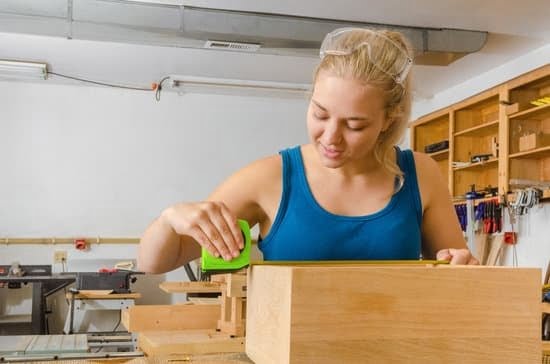Decorative carvings in woodworking, often referred to as woodcarving, are intricate designs and patterns that are meticulously carved into wood. This art form has been practiced for centuries and holds great significance in the realm of woodworking. These carvings enhance the aesthetic appeal of wooden pieces, adding a touch of elegance and sophistication. Craftsmen use specialized tools and techniques to create these intricate designs, showcasing their skill and mastery over the medium.
In woodworking, decorative carvings serve both functional and decorative purposes. They can be found in various wooden objects such as furniture, architectural elements, and even small decorative items. These carvings often tell stories or convey symbolic meanings through their elaborate motifs and patterns. The delicate details created through carving can transform a plain piece of wood into a work of art.
The history of decorative carvings in woodworking dates back to ancient civilizations such as Egypt, Greece, and China. These cultures used woodcarving to adorn temples, tombs, and everyday objects. Over time, this art form spread throughout different regions of the world, with each culture contributing its own unique styles and techniques. Today, woodcarvers continue to carry on this tradition by preserving traditional patterns while also incorporating contemporary approaches to keep this craft alive.
Decorative carvings in woodworking are an integral part of the creative process in creating beautiful wooden pieces. From intricate floral designs to intricate scrollwork or figurative sculptures carved out of wood, these creations showcase the incredible skill and craftsmanship required to produce them.
In the following sections of this article, we will delve deeper into the history of decorative carvings in woodworking, explore different types and techniques used in this art form, discuss how they have evolved over time, and highlight their applications in various aspects of woodworking projects.
The History of Decorative Carvings in Woodworking
Decorative carvings in woodworking have a rich and fascinating history that spans centuries. These intricate designs and motifs have been used to add beauty, detail, and personal expression to wooden objects since ancient times. Understanding the history of decorative carvings in woodworking allows us to appreciate their cultural significance and how they have evolved over time.
The origins of decorative carvings in woodworking can be traced back to ancient civilizations such as Egypt, Greece, and China. In these early cultures, wood carving was an integral part of architectural design, religious iconography, and everyday objects. The artistry and craftsmanship involved in creating these carvings were highly valued and considered a mark of skill and status.
As civilizations grew and evolved, so did the techniques and styles of decorative carvings. The Middle Ages saw the rise of intricate relief carvings in churches, cathedrals, and palaces throughout Europe. The Renaissance period brought about a revival of interest in classical designs inspired by Greek and Roman art. During the Baroque era, ornate and dynamic carvings became popular in furniture and interior decorations.
Today, decorative carvings continue to thrive as a form of artistic expression in woodworking. Modern techniques allow for greater precision and creativity, enabling woodworkers to push boundaries with their designs. Contemporary artists often blend traditional styles with innovative approaches to create unique pieces that reflect both past traditions and modern aesthetics.
| Time Period | Characteristics |
|---|---|
| Ancient Civilizations | Influenced by religious iconography; often used for architectural design. |
| Middle Ages | Intricate relief carvings; popular in churches, cathedrals, palaces. |
| Renaissance | Revival of classical designs; inspired by Greek and Roman art. |
| Baroque | Ornate and dynamic carvings; popular in furniture and interior decorations. |
| Contemporary | Innovative techniques, blending traditional styles with modern aesthetics. |
As the table above shows, the history of decorative carvings in woodworking is a journey through time, reflecting the cultural influences and artistic trends of each era. From ancient civilizations to the present day, decorative carvings continue to be an important aspect of woodworking as a means of expression, craftsmanship, and cultural preservation.
By studying the history of decorative carvings, we can gain a deeper appreciation for the skill and artistry that goes into creating these beautiful works of wooden art.
Different Types of Decorative Carvings
Decorative carvings in woodworking encompass a wide range of styles and techniques. From intricate floral motifs to bold geometric patterns, these carvings add beauty and character to wooden objects. In this section, we will explore some of the different types of decorative carvings and provide examples and images for a better understanding.
Relief Carving
Relief carving involves carving designs into a flat wooden surface, creating a three-dimensional effect. The design can either be raised above the background or recessed into it. This type of carving often features intricate details and creates a sense of depth and texture. Examples of relief carvings include ornate fireplace mantels, decorative panels on furniture, and intricate architectural elements.
Chip Carving
Chip carving is a technique that involves removing small chips or chunks of wood from the surface to create decorative patterns and design elements. This type of carving is characterized by its precision and intricate geometric patterns. Common chip carving motifs include rosettes, triangles, and interlacing bands. Chip carving can be found on items such as wooden boxes, plates, and utensils.
Sculptural Carving
Sculptural carving focuses on creating three-dimensional forms from wood. This type of carving requires strong technical skills to shape the wood into various shapes and figures. Sculptural carvings can range from realistic sculptures depicting animals or human figures to abstract art forms that explore form and texture.
Whittling
Whittling is a type of decorative woodworking that involves shaping wood with a knife to create small sculptures or figurines. It is often done with simple tools like pocket knives, making it accessible for beginners or those looking for a more portable form of woodworking. Whittled creations can range from animal figurines to folk art-inspired pieces.
These are just a few examples of the different types of decorative carvings in woodworking. Each style has its own unique characteristics and requires different techniques and skills. By exploring these various types, woodworkers and enthusiasts can discover the breadth and creativity that decorative carvings bring to the world of woodworking.
Traditional Decorative Carvings in Woodworking
Traditional decorative carvings in woodworking have a rich history that spans across different cultures and time periods. These intricate designs and motifs hold significant cultural meaning and are often recognized as a form of artistic expression. Traditional carving patterns can be found in various forms of woodworking, including furniture, architectural elements, and decorative objects.
One popular traditional carving pattern is the acanthus leaf motif, which originated in ancient Greece. The acanthus leaf is known for its intricate details and flowing lines, making it a favorite choice for embellishing furniture pieces such as chair backs, table legs, and cabinets. This motif has been adopted by many cultures throughout history and continues to be used in contemporary woodworking.
Another prominent traditional carving pattern is the Celtic knotwork. Originating from multiple Celtic cultures across Europe, the intricate interlacing of lines creates mesmerizing patterns that symbolize unity or eternity. These knots were commonly carved onto items such as door panels, crosses, and musical instruments.
In Asian woodworking traditions, dragons are frequently depicted through decorative carvings. Dragons hold immense symbolic significance in Eastern culture, representing power, strength, and good fortune. These carvings are often seen on heirloom furniture pieces or architectural elements like temple doors.
The cultural significance behind these traditional decorative carvings cannot be overstated. They serve as visual representations of historical narratives, religious beliefs, or regional identities. By incorporating these motifs into their woodworking projects today, craftsmen honor the legacy of their ancestors while preserving an important part of cultural heritage.
Whether it’s Greek acanthus leaves or Celtic knotwork or Asian dragons, traditional decorative carvings continue to captivate enthusiasts with their timeless beauty and intricate craftsmanship. As woodworkers delve into these traditions, they not only learn technical skills but also gain a deep appreciation for the cultural stories woven into each design. Traditional decorative carvings stand as testament to the enduring creativity and innovation of woodworkers throughout history.
Contemporary Approaches to Decorative Carvings
In recent years, there has been a surge in contemporary approaches to decorative carvings in woodworking. Artists and woodworkers are continuously pushing boundaries and exploring new techniques, resulting in unique and innovative carved designs. This section will delve into the modern trends and advancements in decorative carvings, showcasing how artists are redefining this traditional art form.
Exploring New Materials
One of the ways contemporary artists are reshaping decorative carvings is by experimenting with new materials. While wood remains the most popular medium for carving, many artists are incorporating other materials such as metal, glass, or even unconventional items like recycled materials into their work. These combinations result in stunning mixed-media pieces that add depth and complexity to the carved designs.
Embracing Abstract and Contemporary Designs
Traditionally, decorative carvings often featured intricate details and representational motifs. However, contemporary approaches have seen a shift towards abstract and contemporary designs. Artists are now using bold geometric shapes, asymmetry, and minimalistic forms to create visually striking carved pieces. This modern aesthetic challenges traditional notions of what decorative carvings can be, adding a fresh perspective to the art form.
Utilizing Innovative Tools and Technology
Advancements in technology have also played a significant role in shaping contemporary approaches to decorative carvings. Woodworking tools such as computer numerical control (CNC) machines have revolutionized the process by allowing artists to intricately carve complex designs with precision. Additionally, power tools like rotary carvers or electric chisels enable woodworkers to achieve faster results without compromising on quality. These technological advancements have opened up new possibilities for creativity in decorative carving.
By embracing new materials, exploring abstract designs, and utilizing innovative tools and technology, contemporary approaches to decorative carvings have breathed new life into this traditional art form. Woodworking enthusiasts can now appreciate the beauty of both traditional and contemporary carved pieces, showcasing the evolution and versatility of decorative carvings.
Tools and Materials Used in Decorative Carvings
Decorative carvings in woodworking require specific tools and materials to achieve intricate and beautiful designs. Whether you are a beginner or an experienced woodworker, having the right tools and materials is essential for creating stunning decorative carvings. This section will provide you with a list of essential tools required for carving as well as the types of wood commonly used in decorative carvings.
Tools Required for Carving
- Carving Knife: A sharp and precise carving knife is crucial for removing small chips of wood and creating intricate details. There are different types of carving knives available, including straight edge knives, chip carving knives, and hook knives.
- Gouges: Gouges are curved chisels used to remove larger portions of wood. They come in various shapes and sizes, allowing woodworkers to create different textures and contours in their carvings.
- Chisels: Chisels are versatile tools that can be used for both shaping and smoothing the wood surface. Flat chisels, V-groove chisels, and skew chisels are commonly used in decorative carvings.
- Mallet: A mallet is a hammer-like tool used with chisels and gouges to apply force and drive them into the wood. It provides control while carving and prevents damaging the tools or causing accidental injury.
- Sandpaper: Sandpaper is necessary for sanding down the carved surface to achieve a smooth finish. Different grits of sandpaper can be used to gradually refine the surface until it reaches the desired level of smoothness.
Types of Wood Used in Decorative Carvings
- Hardwoods: Hardwoods are popular choices for decorative carvings due to their durability and ability to showcase intricate details. Examples of hardwoods commonly used include mahogany, oak, walnut, cherry, and maple.
- Softwoods: Softwoods are more commonly used for larger decorative carvings or when a lighter wood is desired. Softwoods such as pine, cedar, and fir are easier to carve but may be less durable compared to hardwoods.
- Exotic Woods: Exotic woods offer unique grain patterns and colors that add visual interest to decorative carvings. Examples of exotic woods used in carving include teak, ebony, rosewood, and padauk.
- Plywood: While not traditionally considered a carving wood, plywood can be used for relief carvings or creating layered effects in decorative carvings. It allows woodworkers to achieve intricate designs by carving into the different layers of veneers.
It is important to use high-quality tools and select suitable wood for your specific carving project. Each tool and wood type has its own characteristics, so it’s essential to experiment and find what works best for your style of carving. With the right tools and materials at your disposal, you can begin creating beautiful decorative carvings in woodworking.
Step-by-Step Guide to Creating Decorative Carvings
Decorative carvings in woodworking require skill, precision, and patience. If you’re interested in creating your own decorative carvings, this step-by-step guide will walk you through the process.
- Choose the Right Wood: The first step is selecting the right type of wood for your carving project. Different types of wood have different characteristics, so consider factors such as hardness, grain pattern, and durability. Popular choices include basswood, mahogany, and cherry.
- Prepare Your Tools: Before you begin carving, make sure you have the necessary tools. Essential tools for decorative carving include a carving knife or gouge, chisels with various shapes and sizes, a mallet for striking the chisel, a V-tool for making fine lines and details, and sandpaper for finishing touches.
- Sketch Your Design: Start by sketching your design on a piece of paper or directly on the wooden surface. This will serve as a blueprint for your carving. It’s important to plan out the design carefully before starting to carve to avoid any mistakes or mishaps later.
- Transfer the Design: Once you’re happy with your sketch, transfer it onto the wood using carbon paper or by tracing it with a pencil. Ensure that the design is centered and properly aligned on the wood surface.
- Carve Away Excess Wood: Begin by removing excess wood around your design using a roughing gouge or carving knife. This will help define the shape of your carving and make it easier to work on smaller details later.
- Carve Small Details: Gradually work your way towards smaller details using different carving tools according to your design requirements. Take care while making delicate cuts to prevent any accidental damage to surrounding areas.
- Refine and Finish: Once the basic shape and details are carved out, use sandpaper to smooth out any rough edges or imperfections in your carving. You can also apply a finish like varnish or wax to enhance the natural beauty of the wood.
Remember, carving takes practice, so don’t get discouraged if your first attempts aren’t perfect. With time and experience, you’ll develop your own style and techniques. Happy carving.
Applications of Decorative Carvings in Woodworking
Decorative carvings play a crucial role in enhancing the aesthetic appeal and artistic value of woodworking projects. Their intricate designs and detailed craftsmanship make them versatile and sought after for various applications. From furniture to architecture, decorative carvings can be found in a wide range of woodworking projects, making them truly special and unique.
One of the main areas where decorative carvings are prominently used is in furniture making. Ornate woodcarvings can elevate the overall design of chairs, tables, cabinets, and other pieces of furniture. They add a touch of sophistication and elegance to the finished product, making it visually captivating. Whether it’s intricate floral motifs on a headboard or elaborate scrollwork on a dining table, decorative carvings transform ordinary furniture into extraordinary works of art.
In addition to furniture, architecture often incorporates decorative carvings to enhance buildings’ exteriors and interiors. From grand doorways adorned with carved arches to delicate friezes depicting scenes from mythology or history, decorative carvings elevate architectural structures by adding beauty and character. These intricate details create visual interest while showcasing the skill and craftsmanship of the woodworkers involved.
Apart from furniture and architecture, decorative carvings are also employed in other woodworking projects like musical instruments, picture frames, jewelry boxes, and even sculptural pieces. They bring life to these objects by infusing them with personality through their intricacy and symbolism.
For example, ornamental carvings on musical instrument bodies not only enhance their aesthetic appeal but also contribute to sound quality by affecting resonance characteristics. Similarly, picture frames adorned with delicately carved patterns can transform simple photographs or artworks into stunning focal points.
Overall, the applications for decorative carvings in woodworking are vast and diverse. They serve as an embodiment of creativity and craftsmanship while adding beauty and value to everyday objects or architectural spaces. The preservation of this timeless tradition is crucial in ensuring that these intricate works of art continue to inspire and captivate individuals for generations to come.
The Significance of Decorative Carvings in Woodworking Today
Decorative carvings in woodworking hold significant importance in the modern era. Despite advancements in technology and the availability of mass-produced furniture and decor, decorative carvings continue to play a crucial role in preserving cultural heritage and craftsmanship. These intricate designs not only add beauty and elegance to woodwork but also serve as a testament to the skill and artistry of the craftsmen.
One major reason for the continued significance of decorative carvings is their ability to evoke a sense of nostalgia and tradition. In a world dominated by mass-produced items, hand-carved pieces provide a connection to the past and an appreciation for the time-honored techniques used by artisans throughout history. The intricate details and craftsmanship involved in creating decorative carvings demonstrate a level of dedication that cannot be replicated by machines.
Furthermore, decorative carvings have become increasingly valued as unique artistic expressions. Many contemporary woodworkers are pushing boundaries with innovative approaches to carving, creating one-of-a-kind pieces that blur the lines between traditional craft and modern art. By combining traditional techniques with contemporary design sensibilities, these artists are able to create captivating works that reflect their individual style and vision.
To highlight the significance of decorative carvings in woodworking today, it is essential to recognize their application in various fields. Decorative carvings can be found not only in furniture but also in architecture, sculptures, ornaments, and even functional objects like utensils or musical instruments. These carvings add personality, character, and sophistication to otherwise plain surfaces or structures.
Conclusion
In conclusion, decorative carvings in woodworking are not only a means of enhancing the aesthetic appeal of wooden objects but also an art form that carries rich historical and cultural significance. As seen throughout history, decorative carvings have evolved and adapted to different styles and techniques, showcasing the creativity and skill of woodworkers. From traditional patterns and motifs to contemporary approaches that push boundaries, decorative carvings continue to captivate us with their beauty.
The tools and materials used in decorative carvings play a crucial role in achieving intricate designs and details. Woodworkers rely on a range of tools such as chisels, gouges, knives, and mallets to carve their creations. Different types of wood are chosen based on their characteristics and suitability for carving, with hardwoods like mahogany and walnut being popular choices due to their durability.
The applications of decorative carvings in woodworking are vast and varied. They can be found in furniture pieces, architectural elements, sculptures, and other woodworking projects. These intricate carvings add depth, texture, and visual interest to the final product. Whether it’s a grandiose antique chair adorned with ornate carving or a contemporary carved wall panel in a modern home, decorative carvings enhance the overall aesthetic value.
In today’s era of mass production and technology-driven creations, the significance of decorative carvings lies not only in their artistic allure but also in their preservation of cultural heritage and craftsmanship. They serve as a reminder of the skillful craftsmanship that can be achieved through meticulous handwork. As we appreciate the artistry behind each carved detail, we gain a deeper understanding of the time-honored traditions preserved within these wooden masterpieces.
In summary, decorative carvings in woodworking are an art form that spans centuries of human creativity and craftsmanship. From its historical origins to its evolution into contemporary styles, this art has continued to inspire awe with its beauty.
By exploring decorative carvings further, we can gain a greater appreciation for the skill and dedication that goes into creating these intricate designs. So next time you come across a piece of furniture or architectural element adorned with decorative carvings, take a moment to admire the artistry and reflect on the lasting impact of this ancient woodworking technique.
Frequently Asked Questions
What are wooden carvings called?
Wooden carvings are commonly referred to as woodcarvings. This term encompasses the art of shaping and sculpting wood into various forms and designs. Woodcarvings have been practiced for centuries across different cultures and are appreciated for their intricate craftsmanship, attention to detail, and ability to capture the natural beauty of wood.
Which art form is a beautiful carving on wood is called?
A beautiful carving on wood is typically referred to as a wood sculpture or wood carving. This art form involves the skilled manipulation of wood through cutting, shaping, and refining techniques to create a three-dimensional piece of art.
Wood sculptures can range from small decorative figurines to large-scale installations that showcase the artist’s creativity, mastery of technique, and appreciation for the natural characteristics of the chosen wood.
What is the process of making decorative items from wood called?
The process of making decorative items from wood is commonly known as woodworking or woodcrafting. It involves working with different tools to shape, join, finish, and decorate wooden pieces in order to create functional or ornamental objects.
Woodworking can encompass a wide range of techniques and skills, including carpentry, joinery, carving, turning, staining, and polishing. This craft allows artisans to transform raw lumber into furniture, sculptures, musical instruments, utensils, architectural elements, and other aesthetically pleasing creations that enhance both indoor and outdoor spaces.

Hi everyone! I’m a woodworker and blogger, and this is my woodworking blog. In my blog, I share tips and tricks for woodworkers of all skill levels, as well as project ideas that you can try yourself.





